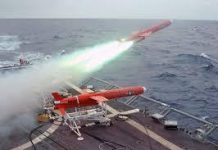
European defense ministers are scheduled to meet next week to discuss the details of a proposed “drone wall” aimed at safeguarding the continent from airspace intrusions originating from Russia, Reuters reported Thursday.
The project has gained urgency after Russian strike drones violated Polish airspace last week, causing damage to at least one home.
“We want to move forward with very intensive and effective preparations to address this dangerous gap as quickly as possible,” EU Defense Commissioner Andrius Kubilius, a Lithuanian, told Reuters. Kubilius, who has long advocated for the drone wall, will lead next week’s discussions.
The idea of a “drone wall” along Europe’s eastern frontier was first introduced by Lithuania in May 2023. Then-Lithuanian Interior Minister Agnė Bilotaitė proposed it as part of broader efforts to strengthen border surveillance and defense along NATO’s eastern flank. By May 2024, six NATO members—including the three Baltic states, Poland, Norway, and Finland—had agreed to collaborate on the initiative.
Earlier this year, a joint Estonian-Lithuanian proposal for EU funding was rejected. However, attitudes in Brussels shifted dramatically after approximately 20 drones entered Polish airspace on the night of September 10. In her landmark State of the Union speech that day, EU Commission President Ursula von der Leyen vowed to implement a drone wall to protect all 27 member states from future UAV threats.
Kubilius also noted that Ukrainian expertise and technology could contribute to the effort. Von der Leyen had announced a €6 billion ($7 billion) drone partnership with Ukraine in her September 10 speech, intended to bolster Europe’s capabilities in this area of modern warfare. “They’re eager to share their experience and know-how,” Kubilius said.
While the exact structure, functionality, and cost of the drone wall remain unclear, Kubilius described a system combining sensors, jamming technologies, and weapons to detect and neutralize incoming unmanned aerial vehicles. Public estimates suggest that the system could be operational within a year, though he stressed that precise timelines are still uncertain.
Although the Polish airspace violation was the most serious incident, there have been other breaches of EU airspace by Russian aircraft since the onset of the Ukraine conflict. Just three days after the Polish incident, Russian drones were reportedly tracked flying over Romania en route to strike a remote region in Ukraine.




